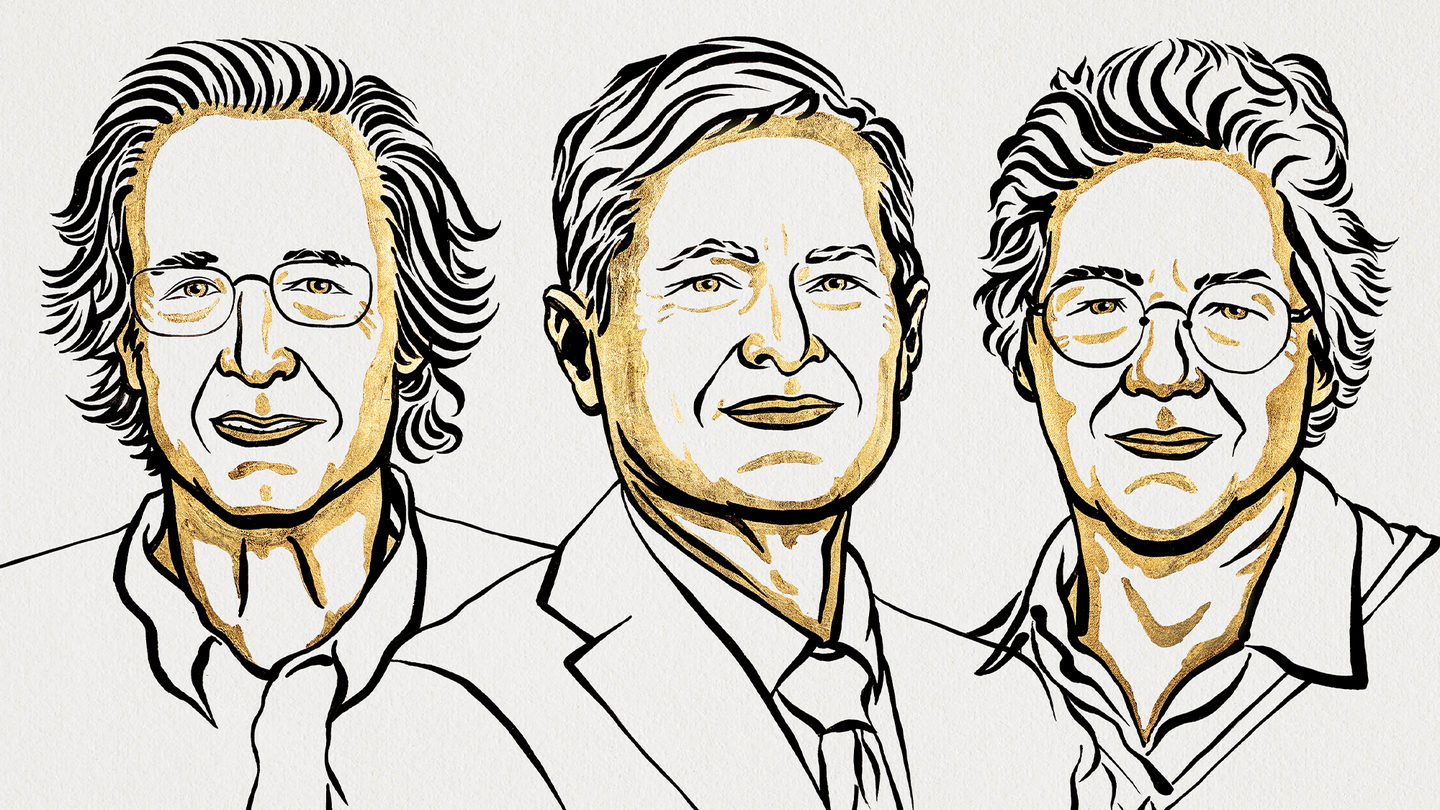Winners of the 2023 Nobel Prize in physics measured electrons by the attosecond
Their groundbreaking research helps generate and measure some of the 'most rapid physical effects known.'

The 2023 Nobel prize in physics was just awarded to three physicists for their work probing the world of electrons. Pierre Agostini, Ferenc Krausz, and Anne L’Huillier will jointly share the prestigious prize.
[Related: When light flashes for a quintillionth of a second, things get weird.]
These physicists “are being recognised for their experiments, which have given humanity new tools for exploring the world of electrons inside atoms and molecules,” the Nobel committee wrote on Tuesday. “Pierre Agostini, Ferenc Krausz and Anne L’Huillier have demonstrated a way to create extremely short pulses of light that can be used to measure the rapid processes in which electrons move or change energy.”
Agostini is a professor emeritus at Ohio State University. Krausz is affiliated with the Max Planck Institute of Quantum Optics and the Ludwig Maximilian University of Munich. L’Huillier is a professor at Lund University in Sweden and the fifth woman ever awarded the physics prize.
Discovering the attosecond
When perceived by humans, fast-moving events flow into each other similar to the way a flip book of still images can be perceived as continual movement. To better investigate these extremely brief events, special technology is needed.
In the world of electrons, these changes occur in an attosecond, or only a millionth of a trillionth of a second. An attosecond is so short that there are as many attoseconds in one second as there have been seconds since the birth of the universe roughly 13.8 billion years ago.
Electrons’ movements in atoms and molecules are measured in these attoseconds. Agostini, Krausz, and L’Huillier have conducted experiments that demonstrate how attosecond pulses could actually be observed and measured, according to the awarding committee.
Overtones of light
In 1987, L’Huillier discovered that many different overtones of light arose when she transmitted infrared laser light through a noble gas. Each individual overtone is a light wave that has a given number of cycles for each cycle in the laser light. The overtones are caused by the laser light interacting with atoms in the gas. They give some electrons an extra energy boost that is then emitted as light. In the almost four decades since, L’Huillier has continued to explore this phenomenon which laid the foundation for subsequent breakthroughs.
[Related: This record-breaking X-ray laser is ready to unlock quantum secrets.]
In 2001, Agostini produced and investigated a series of consecutive light pulses. During these experiments, each pulse lasted only 250 attoseconds. At the same time, Krausz was working with another type of experiment. His experiment made it possible to isolate a single light pulse that lasted 650 attoseconds.
This work enabled the investigation into physical processes that are so rapid that they were previously impossible to follow.
“We can now open the door to the world of electrons. Attosecond physics gives us the opportunity to understand mechanisms that are governed by electrons. The next step will be utilizing them,” Chair of the Nobel Committee for Physics Eva Olsson said in a statement.
This groundbreaking work has potential applications in electronics and medicine in the future. In electronics, understanding and controlling how electrons behave in a material is crucial. Attosecond pulses could also identify different molecules in future medical diagnostics.
“In much the same fashion that a photographer may use a flash of light to capture a hummingbird’s wing or a baseball being hit, this year’s Nobel prize winners developed revolutionary methods to generate and measure extremely fast laser pulses that can capture some of the most rapid physical effects known,” Johns Hopkins University physicist N. Peter Armitage told PopSci in an email. “Among other aspects, their work gives insight into the motion of electrons between atoms and allows movies of chemical reactions to be made. It’s remarkable fundamental science, and was done for that reason, but these discoveries may ultimately allow insight into the effects that give superconductivity at high temperatures and efficient energy harvesting from light.”
The 2022 Nobel prize in physics was awarded to John F. Clauser, Alain Aspect, and Anton Zeilinger for their independent contributions to understanding quantum entanglement. Other past winners include Pierre and Marie (Sklodowska) Curie in 1903 and Max Planck in 1918.